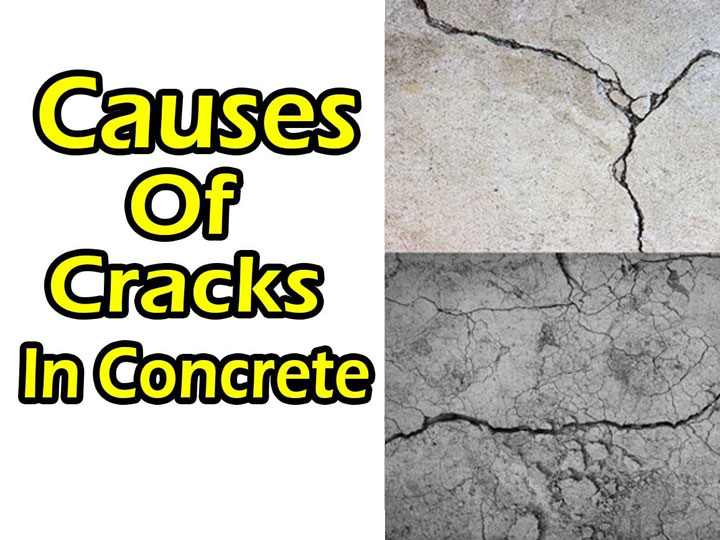RCC structures are very much dependent on the concrete in them for supporting the loads, so any kind of cracks in the concrete is cause to worry. If left unattended, these can lead to massive structural failures, taking a lot of lives with it. Therefore, any civil engineer worth his salt should know everything there is to know about the types and causes of concrete cracks.
Although ominous, it should be noted that concrete cracking is quite a common thing to see, even expected. Those concrete cracks that can be expected aren't by design much of a problem. However, the cracks that were unforeseen - those spell trouble.
Unexpected cracks in concrete, caused mostly by improper casting or unanticipated environmental conditions, represent the prime natural threat to a structure. Not presumed in the design phase, these concrete cracks can reduce the integrity of the structure, affecting its durability.
Depending upon the root cause, cracks in concrete can be classified into four main categories, each having unique characteristics. These are described as follows.
When the designer fails to calculate the expected tensile stress across a concrete member, expect flexural cracks to develop. This is simply the concrete getting pulled apart, and are commonly seen in horizontal slabs for the most part. Especially those that are resting on a rather soft ground.
Purely a design issue, flexural cracks can be stopped from appearing by placing reinforcements where the tension will appear in the member. For example, this is the very reason why we place bars at the bottom of a beam. A few well-placed steel bars across the tensile zone will prevent the concrete from getting flexural cracks.
Happening after the hardening of concrete, dry shrinkage cracks are results of miscalculation in curing needs. As concrete dries and the water evaporates, its volume reduces and tensile forces generate, which pulls the concrete apart. This is mitigated by keeping the concrete constantly in contact of water and placing contraction joints.
Drying shrinkage cracks may form to be full length, map cracking, or may follow certain patterns. This type of cracking should be well anticipated and the designer should handle it by placing reinforcements, using contraction joints, and above all, a good curing process.
Everything contracts and expands with changes in heat levels, and concrete is no exception either. Moisture and heat levels both cause changes in volume in concrete. Since it has a great degree of resistance to compressible forces, the expansion events go mostly unnoticed. But the contraction events are what causes the thermal cracks in concrete.
If the concrete is left free to contract freely as temperature drops, then there shouldn't be thermal cracks. But if the concrete is restrained from inside or outside, then tensile forces will generate which will pull the concrete apart, generating cracks. Happening mostly during hardening, thermal cracks can be so big that one crack may render the whole member useless.
Another common type of cracks found in concrete slabs, plastic shrinkage cracks are comparatively shorter in length and spread. This happens during the hardening process, before the concrete has attained its tensile strength.
Plastic shrinkage cracks happen due to moisture evaporation from concrete. When the moisture evaporates, it leaves behind a porous structure within the mix, that wants to reduce itself in volume. Which creates tensile microforces and ends up getting cracked. The trick to keep it from happening is to use measures to prevent the concrete drying too quickly.
